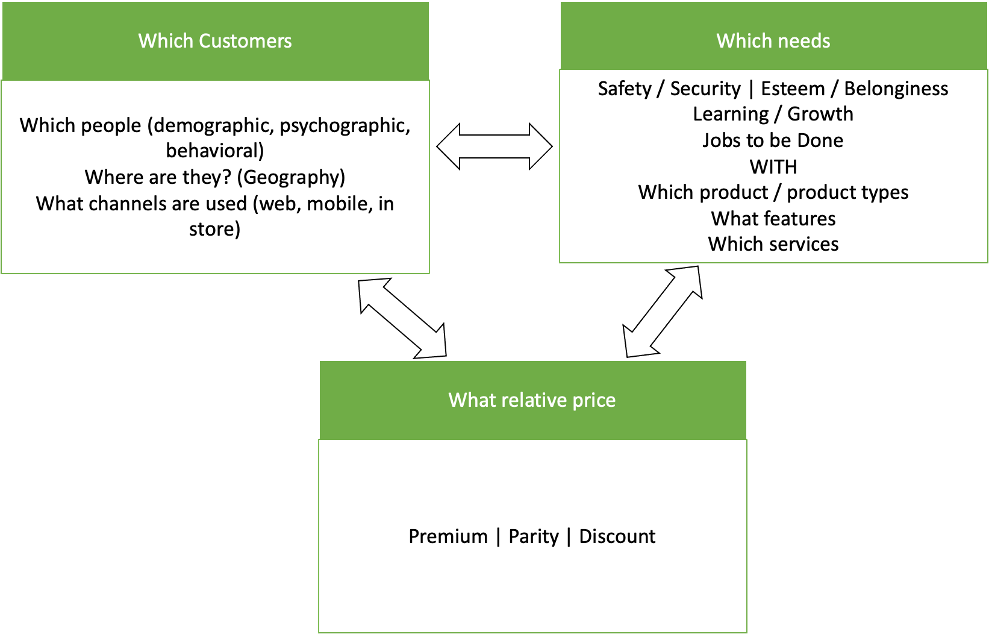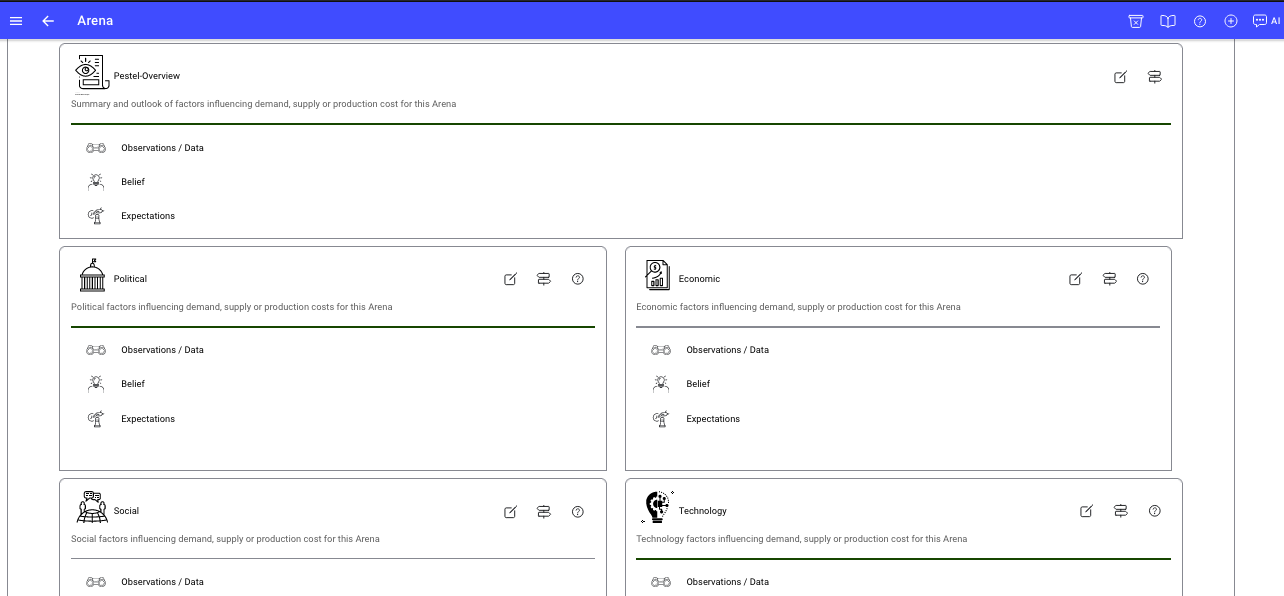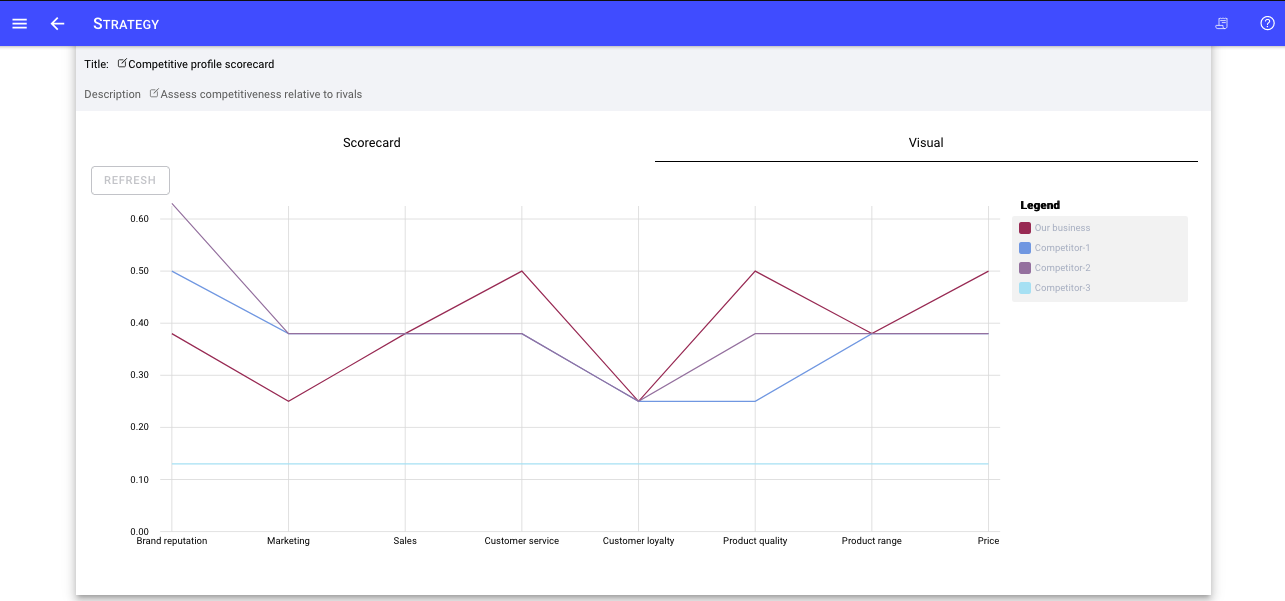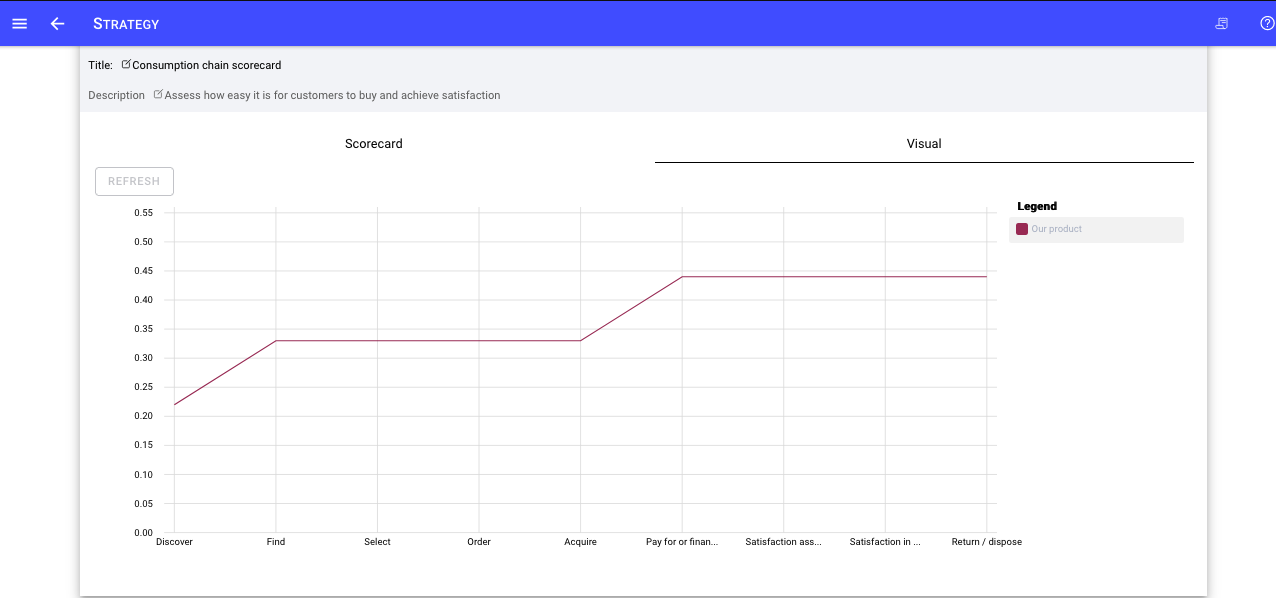Introduction
Your unique value proposition (as defined by Michael Porter) is an essential integrated component of your where to play choice. Your value proposition is what reduces your direct competition and prepares your business to win with your chosen market segment. Your Where to play choice is ideally unique either by
-
Satisfying customer needs that rivals do not sufficiently satisfy
-
Satisfying a different segment of customers e.g. customers underserved by other players in the industry.
-
Providing solutions at a relative price that customers with those needs are willing to pay.
-
The combination of these 3 attributes makes your value proposition unique.
Though seemingly in the same industry, Bentley and KIA are unlikely to be competing for the same customers as the variations in their value propositions means they are targeting different customers, with different needs at a different relative price.


-
From the relative price section of the Strategic choices canvas choose + add icon.

-
Enter your relative price description, which can be however it makes sense to best describe it. You might define it as simply as Premium, Differentiated, Budget, Mass market or other labels.
Alternatively, you might describe it terms of being % cheaper than your nearest rivals.
References

|
Understanding Michael Porter: The Essential Guide to Competition and Strategy , 2011, Joan Magretta |

|
Playing to Win: How Strategy Really Works, 2013, A.G. Lafely and Roger L. Martin |












